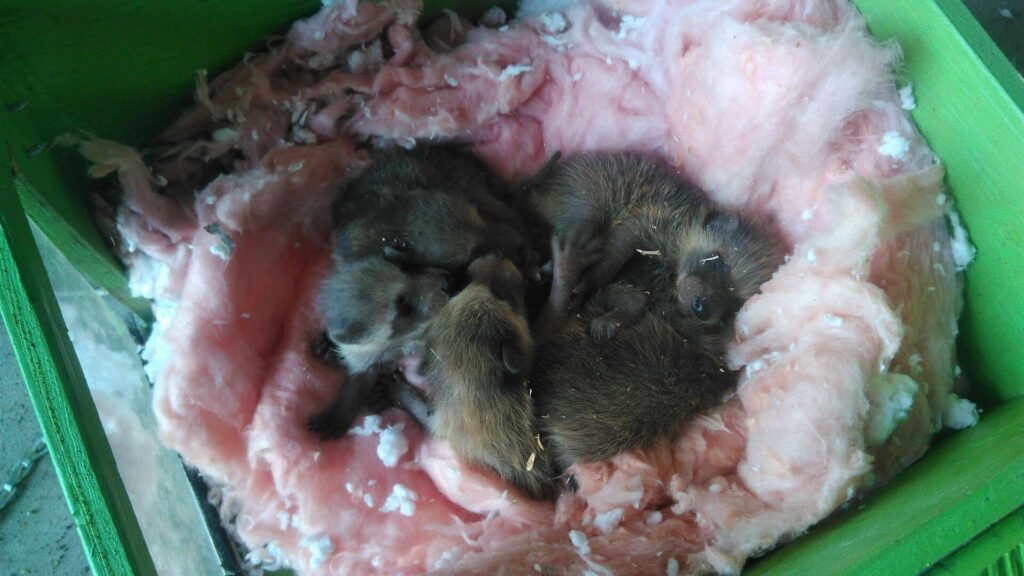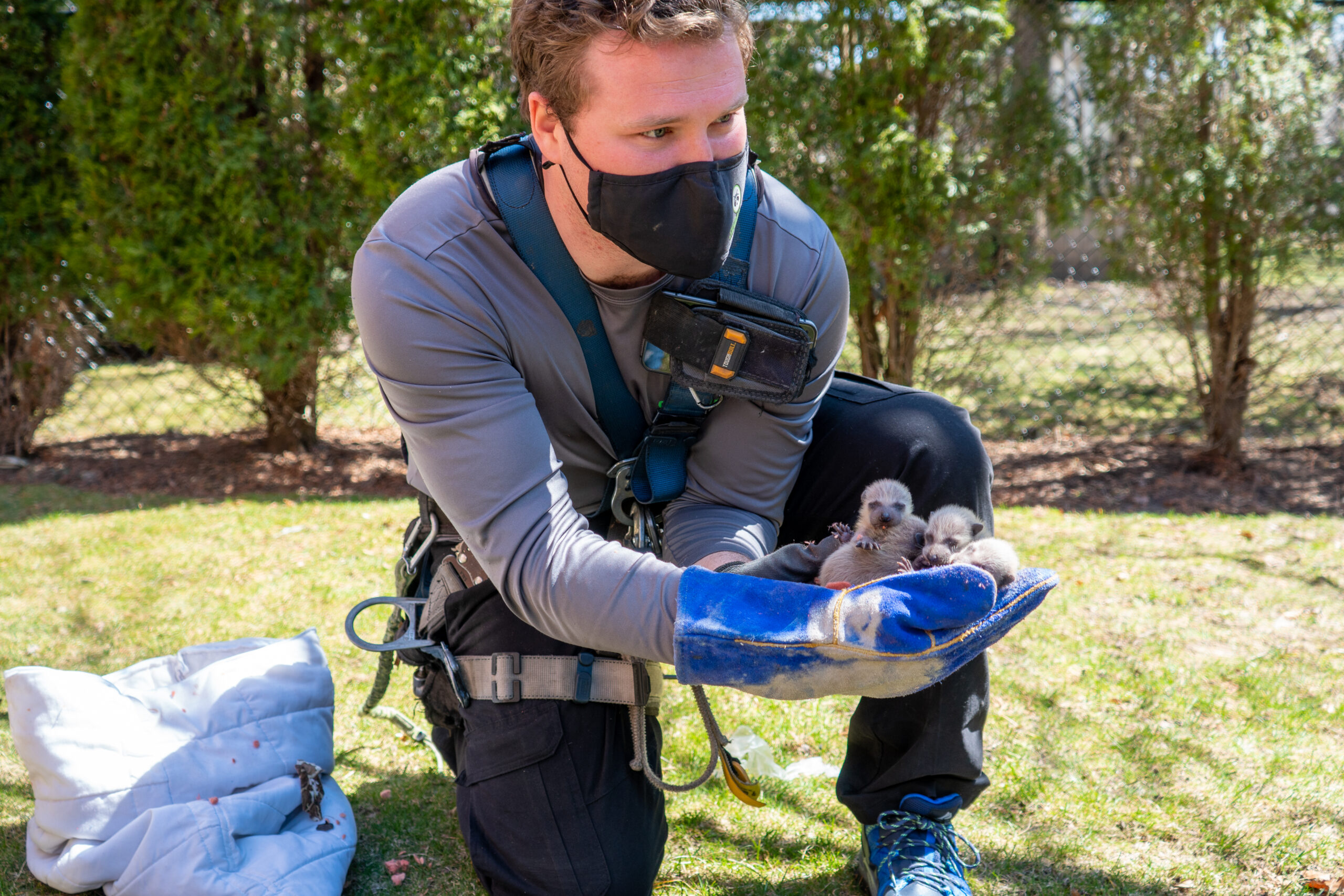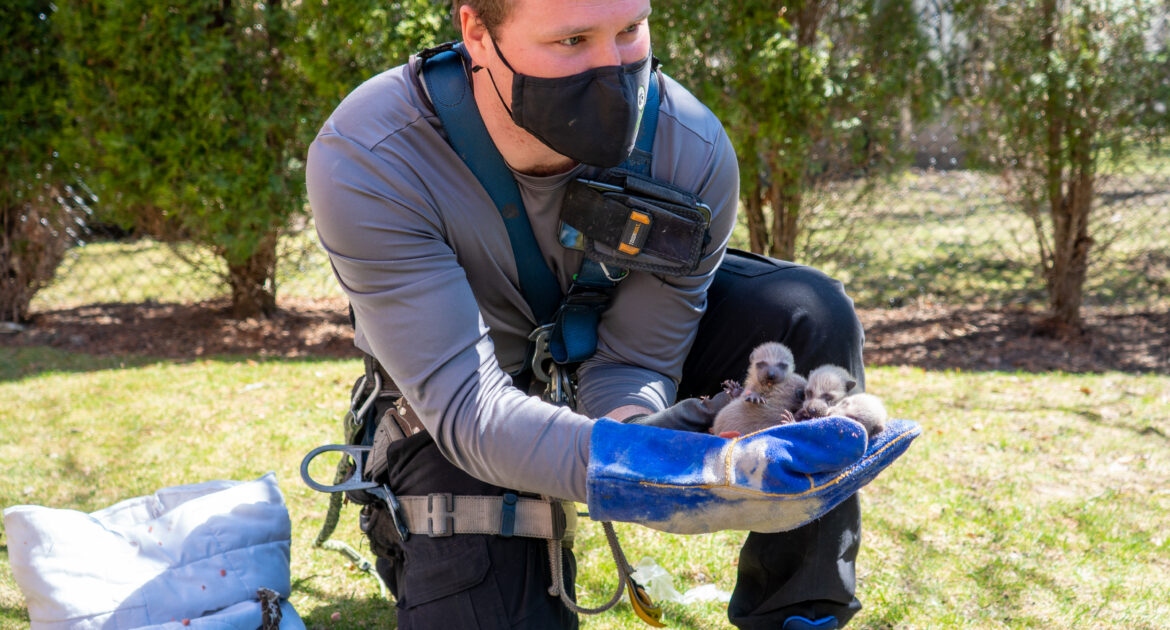Perhaps you flipped the light on in your attic only to find ten pairs of glowing eyes staring back at you. After your moment of shock, you realize what they are — baby raccoons! You don’t want to hurt or scare them, but you definitely want them out of your home. Learn more about Skedaddle’s humane baby wildlife removal works and why it’s the best option for young animals.
How Humane Wildlife Control Services Work
When it comes to humane wildlife removal services, keeping the family unit together is an important part of our process. Our technicians do their best to keep the baby animals together during the removal and safely reunite them with their mother outdoors. Below are a few steps we take when removing baby animals from the inside of your home.
1. Assess the Situation
Are you dealing with wildlife in your home? While an infestation may look the same on our clients’ level, from a technician’s viewpoint, it may make all the difference. Skedaddle technicians begin the removal process by completing a property assessment to identify where the wildlife is, how they got inside, and how many animals need to be removed.
2. Place Babies in a Safe Box
Babies will be gently removed from the nest or den and placed together in a heated baby box that was specifically designed to keep them safe and warm while they wait for their reunion with their mother. We understand how scary this event is for animals who probably assumed they would be living in your home forever, and we do our best to remove them swiftly and carefully.
3. Reunite Babies With the Mother Outdoors
Many urban animals often have multiple dens outdoors. Wildlife mothers are able to collect their babies from the baby reunion box and carry them one by one to a new location. Our technicians will monitor the box to ensure that all babies are collected. . We’ve probably already spoken to you about how we’re going to wildlife-proof your home for the future, and at this point, we will begin putting it into motion. We will seal holes and other potential entrances, and clean any hazardous materials they brought on your property.
Frequently Asked Questions About Baby Wildlife Removal
We understand that you may be surprised to discover an entire family of animals in your home. They can be adorable — but you may worry that they will quickly take over your home! Read through our FAQs below and feel free to get in touch with further questions.
Can I Remove the Babies by Myself?
Please don’t ever try to remove wildlife from your home without a professional’s help. This is especially important if you are dealing with a mother and her babies. There’s a good chance that she will be extremely protective of her young, and this instinct could result in you getting hurt. Baby animals can be very fragile and they need special care during removal.
Can I Keep a Baby Animal as My Pet?
It is never a good idea to separate a young animal from its mother unless there is no other option. Ideally, a baby animal should stay with its family. Do not keep it as a pet, and do not try to remove it from its mother and care for it by yourself. Call us to determine what to do next based on the type of animal, where you found it, and the state you found it in. If it is injured, it will likely need more care than what you can provide.
Get In Touch With Skedaddle for Baby Wildlife Removal Tips

If you’ve discovered baby raccoons, opossums, or other young animals in your home, give us a call right away! Skedaddle specializes in humane wildlife control services and we aim to successfully reunite baby animals with their mother in a safe place outside your home where they can continue their life together. Contact us today and let us know what we can do for you!




